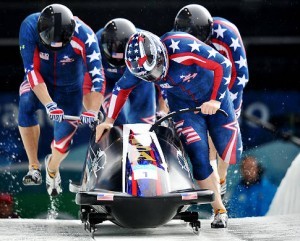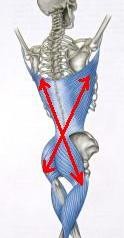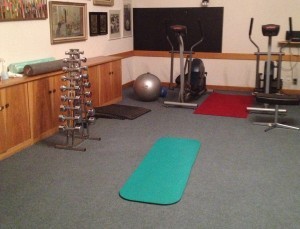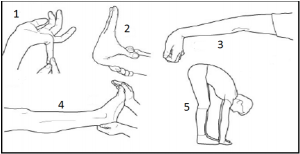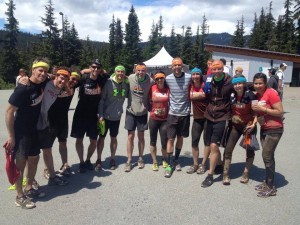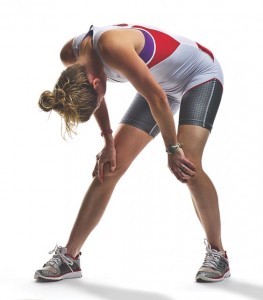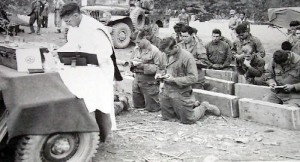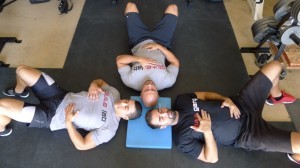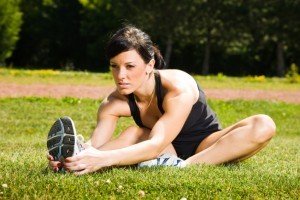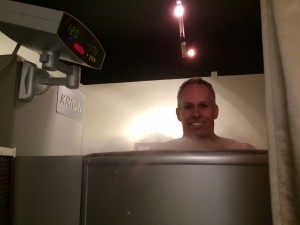Hey there: It's Hallowe'en weekend and in the past I've given you some strategies as the 'best' treats to eat this weekend. Or I've given you extra workouts to do before heading out for a night of partying but today I have something different in store for you. But before I get to today's tip I want to let you in a little experiment I'm running.The experiment is the Collins Health Project. What this involves is a behind the scenes look at the healhy and not so healthy things I do. Yeah I admit it. Every now and again I like to enjoy a beer, some pizza and maybe even some ice cream. But I have a standard to maintain, as do the rest of you. And of the best ways to make ourselves accountable is to let others what we are doing. They will support us and give us a pat on the back. And at the same time they will let us know when something is out of character given what out stated goals are.So with that in mind I'm going to video portions of my workout? I'm going show what I'm eating, how much and how often. You'll get to see what I do to relax during my down time. This will serve two purposes which are to help me get in the best shape of my life and secondly to help you steal some ideas that may help you as well.Stay tuned because some of the first footage you'll see from this Hallowe'en weekend will be unique but hopefully serve as a great launching pad for the rest of the project. Now on to the tip.Did you ever watch the Price is Right? I remember watching this a kid when we would visit our grandparents in Edmonton....
The Benefits of Massage Therapy
- Chris Collins
- Work-Out Recovery
- 1768 Hits
- 1 Comment
-
Hi there: Hope you had a great week. As the weekend approaches for many this equates to some down time and relaxation. And this is vital for optimal health and performance. We can't be at our best if we don't allow our bodies to rest and recover every now and again.So with this in mind I wanted to pass along one of my favourite ways to recover in between training sessions. I'm talking about massage therapy. But rather than have me attempt to pass along all the benefits I thought I'd get a registered massage therapist (RMT) to fill you. So I'll let Tanya Gervais of Lotus Massage take it from here. For those interested in a massage make sure to read to the bottom for a special offer Tanya is extending only to the readers of this blog.What are the benefits of massage therapy?The easy answer is for me to blurt out everything that I learned in school; however, the other answer is to reply that this is a heavily loaded question. There are a multitude of different conditions that massage therapy can provide treatment for. Massage therapy isn’t just about getting a good (and I’m cringing as I say this) rub down; there are specific treatment protocols for specific injuries and conditions; e.g. tendonitis, plantar fasciitis, frozen shoulder, and sprains. For other conditions that are more related to pain syndromes as a result of repetitive movements and or occupational postures, education, prevention and a maintenance program play an important role in a successful treatment plan.How to Assess Tissue HealthThere are many factors involved when assessing tissue health. Muscle tension may be due to repetitive movements from work, play or hobbies that apply stress and strain to the body. Sports injuries and car accidents can create trauma to the tissues and affect...
Enjoying Thanksgiving Can Work to Your Advantage
- Chris Collins
- Work-Out Recovery
- 1572 Hits
- 1 Comment
-
Hi there: Hope you're doing well. This has been a great week. You want to know why? I think it's because I've had great perspective lately. I've been really thankful for the good things in my life while not worrying so much about the distractions that can sometimes get us down. It might be the Thanksgiving weekend that has me in this kind of mood but it definitely ties in to your weight loss or performance goals.'Ok, hold on a sec', you're probably saying. 'Did he just say Thanksgiving and weight loss goals in the same sentence.' Absolutely I did. And here's what I mean by it.Our bodies go through both positive and negative stress. The positive stress is called eustress. Sound familiar? Unfortunately for most people this may be the first time they've ever heard of this word. And that says a lot if the positive aspect of stress is so foreign to us we don't even recognize the word for it.So it would make sense then that the balance tends to be skewed towards the negative end of the stress spectrum.But first we should identify a couple of hormones involved with the stress response. These are cortisol and adrenaline.Adrenaline is the hormone associated with 'fight or flight' and results in increased heart rate, elevated blood pressure and boosts energy supplies. We are hard-wired for this response to always be at the ready and thus available to protect and keep us safe.Cortisol is another stress hormone and increases sugar (glucose) in the bloodstream, enhances your brain's use of glucose and increases the availability of substances that repair tissues. It also alters immune system responses and suppresses the digestive system, the reproductive system and growth processes.Let's take a quick look at how stress affects digestion, recovery and training.1. When stress triggers the 'fight or fligt'...
More on Chocolate Milk Post Workout
The other day I finished up a session with a client and we were talking about post-workout nutrition. And as we have chocolate milk for after your workout I offered one to this client. And she had a question regarding drinking chocolate milk. Specifically she wanted to know if it was ok to drink the reduced sugar version. Here's what I told her. After training the body is looking to begin the repair process and replenish metabolites that have been depleted. During training the body uses ATP as the energy source. Carbohydrates are a prime source for generating ATP during training. Some of the cards we eat are stored in the body in the form of glycogen in the muscle and liver. Anyways, it makes sense that after training we've depleted the body's source of glycogen and this needs to be replaced. If we eat only protein we won't have the necessary nutrients to replenish our store of glycogen. This is a common mistake some make with regards to their post-workout nutrition. They believe they need protein, which they do, but nothing else. There is also the belief that more is better and if 20 grams of protein in your post workout shake is good than 40 grams would be better and 50 or 60 grams would probably be best. But here's the thing. 20 grams of whey protein will get the job done. As will 6 grams of branched chain amino acids. Or 2 grams of the essential amino acid leucine. But we tend to follow label instructions on our favourite protein supplement which tells us a serving is 30-50 grams of protein. And the other protein is the lack of carbohydrate. And optimal post-workout formulation would have 3 or 4 times the amount of carbs as protein. A regular...
Yoga - Is It Good For Athletes? (Part II)
- Chris Collins
- Fitness
- Training
- Work-Out Recovery
- 1939 Hits
- 6 Comments
-
Recently I attempted to initiate a dialogue on the topic of whether or not yoga is good for athletes. Because a number of athletes use it as part of their training.But is it something that benefits them? Is it a need to have or a nice to have?The last post was meant to examine yoga as to how it meets the needs of athletes. And I wanted to focus primarily on what 99.9% of athletes that come through our door are asking for which is to get stronger, to get faster and to become fitter.Yet in the comments section on the previous post the proponents of yoga didn't address those questions. Instead we heard about many of the other benefits of yoga, some of which I agree with, a listing of the various types of yoga as well as offerings as to new spellings of words. The urban dictionary will be calling. [caption id="attachment_3014" align="aligncenter" width="480"] Just before my first yoga class. What I'd like to do with this post is see if there is agreement as to what develops strength, power and fitness? I will also share what my first experience with yoga was like. Lastly, I am going to pose another question regarding yoga not so much from the athletic development perspective but in a more general sense. So rather than hide in my squat racks with weight vests on like Salman Rushdie I want to continue the dialogue and get some more feedback. Here we go. If we are to discuss increasing strength then there needs to be consideration to resistance. There are a number of ways to apply resistance to a system. It can be variable such as bands and tubing or constant such as body or free-weight. We can move the resistance through or against the...
Heart Rate Variability
Recently we've incorporated a couple of new technologies at Okanagan Peak Performance Inc. This supports our goal for you which is to get you better results in less time. And by incorporating these technologies we know that we will be able to help you recover from your injury, lose more weight and compete at a higher level.So what are these new technologies?They are Bioforce HRV units and Polar Heart Rate monitors. And I know what you're thinking. There's nothing new about heart rate monitors. And you'd be right. But how many of the people who know the benefits of training with a heart monitor actually use one? Very few. It's kind of like back when people owned VCRs but nobody ever programmed it and instead it flashed 12:00.So we've made a bulk order with Polar to be able to supply all of our clients with heart rate monitors.And the heart rate monitors came about as a result of a need to be able to use the Bioforce HRV units. So what exactly is a Bioforce HRV?Well HRV stands for heart rate variability and is a measure of magnitude of change between heart beats. This was developed by the Russians in the 60s when they would send cosmonauts into space and needed a way be able to monitor their health. Some of the only data coming back from space was heart rate data which the scientists were able to break apart and determine that there is valuable information contained within the heart beat.When there is a lot of variability between heart beats we could say an individual is fit or well rested and recovered. On the other hand if the variability between heart beats was minimal this could be indicative of someone in poor shape or someone who needs a rest day.This is not the same as simply measuring the pulse of...
What to Drink for Your Goal
Do you like to drink? And unless you're like a few of my college buddies I'm talking about during the day, while at work or at school. I guess it's not so much a question of 'do you drink?' but rather 'what' do you drink? But you have to admit asking the question the other way got a number of you checking the calendar to see how many more days until the weekend. But seriously though when it comes to our nutrition it seems as though more emphasis is put on what to eat rather than what to drink. And this will trip up many people. How does it trip them up? By drinking things that don't support whatever their goal is. And in this case the goal could be weight loss, weight gain and or performance. So let's take a quick look at each of these to see what you should be drinking. Goal #1 - Weight Loss If you're like most people that go to the gym then your goal is weight loss. And as soon as we can agree that six packs are made in the kitchen and not the gym we'll be way further ahead than if we think we can go for extra walk after dinner to make up for the cherry strudel you had for a mid-afternoon snack. But even if we realize that our nutrition plays the most important role in our quest for the leanest physique we need to be aware that our choice of beverage can severely impact our goal. So what should be drinking? The best choice are water and green tea. There are no calories and the polyphenols and caffeine in the tea may help with your weight loss goal. Just be careful to monitor your caffeine intake and the potential for...
Review of 5 Fitness Apps
Apps sure have become a big part of our lives. And with what we do at Okanagan Peak Performance Inc it's inevitable that we see more people using apps to track their health, log their nutrition and structure their workouts. With more and more people owning smart phones it's reasonable to expect the number of fitness apps and users to climb. Currently it is estimated that 20% of smart phone owners have a least one fitness app. So I took some time to check out some of the more popular fitness apps out there. Here's what I found. 1. My Fitness Pal - free http://www.myfitnesspal.com/ Because it's a free app you will see ads bordering the pages of the app. And I'd say that's a small price to pay for a resource that helps you track your nutrition. And with 40 million users apparently others don't mind a little monetization from some ads either. This app also includes a section for exercise but I would pass on it using it for exercise help for a couple of reasons. One is it estimates caloric expenditure based on the exercise type. Looking under 'S' I couldn't find squat. Not good. I eventually did find an entry for squat but when it asked me for minutes of squatting rather than load and reps I knew we can do better. 2. Fitness Buddy - $0.99 http://fitnessbuddyapp.com/ While the previous app was geared around your nutrition this one is all about your workouts. The workouts seem to be a bodybuilding style of training where you select body parts to put a particular emphasis for a workout. So you might choose Butt and Thigh Toning or a Big Chest Program. From the looks of the app it includes pictures rather than videos of how to perform the...
Minimal Essential Dose: Protein
Do you take supplements? In particular do you take a protein supplement? If so, you may be interested to know that there is another version of your protein you can take that requires you to eat or drink less than you may be used to and still get all the benefits. And this other version is essential amino acids or even more specifically branched chain amino acids. Let's just take a moment here and define what we're talking about. Without getting into too much detail an amino acid is a chain of carbon atoms with an amino group, -NH2, at one end, and a carboxyl group, -COOH, at the other end. Some of the amino acids our bodies can't make so they are called essential amino acids. And within this group of essential amino acids there is a sub-group of amino acids called branched chain amino acids or BCAAs with functional group bonded to one of the carbons. Clear as mud? Don't sweat it too much. The take home message is that when we supplement with protein there are a few options that will all achieve the same end goal. 1. You could take 20 grams of whey protein2. You could take 6 grams of BCAAs3. You could take 2 grams of leucine Leucine is an example of a BCAA. So all three options above have similar effects which one would you choose? Think in terms of minimal essential dose. Obviously we would go with the third option, right? Why take ten times the amount of something i.e. 20 grams of whey protein to get the same effect as a much smaller dose i.e. 2 grams of leucine? Alright so if we're in agreement that less is more when it comes to supplementation the next step is to determine what to...
You're Not Doing Tabatas
It seems like high intensity interval training (HIIT) is all the rage these days. Anyone can do it at anytime as frequently as they like and achieve amazing results. Sound too good to be true? That's probably because it is. If you're not familiar with HIIT you may be more familiar with the Tabata protocol or some other version of high intensity short duration exercise. Let me re-phrase that. You may be familiar with the name Tabata but it's unlikely you're familiar with the actual protocol of the study performed by the researcher of the same name. So why is the general population going crazy over HIIT or Tabatas? Well because the landmark study, and others by researchers such as Dr. Martin Gibala, indicate that you can achieve weight loss, improved aerobic function and potential performance with a fraction of the time invested in training as is normally thought to be necessary. Now before I give you some things to consider before jumping into HIIT or Tabatas at your next training session let's quickly review what the Tabata protocol involved. While two groups participated in the study the one we are interested in is the short duration, high intensity group. They did:* sprints on a braked cycle ergometer* 7 or 8 sprints of 20 seconds in duration* 10 seconds rest between sprint attempts* at an intensity of 170% VO2 max* for a 6 week period Now there are a number of things to be aware of here when comparing this protocol to what many exercisers believe there are following when they workout. So with that in mind here are 4 Reasons You're Not Doing Tabatas. Reason #1 - You're not on a bike While it's true there are many benefits of cross-training it's a bit of a stretch to do something...
The Basics - Done Wrong
Over the years there have been a number of things we've heard repeatedly in the fitness industry. And sometimes there is no basis to these statements other than the fact they have been repeated enough times and they are accepted as truth.For example, 'eat small frequent meals throughout the day to stimulate your metabolism' is one that comes to mind. You've heard this before I'm sure. But where is the scientific research that backs this claim? If anything maybe what happens is we end up eating frequent meals throughout the day. Just not small meals. And thus the supposed benefit is lost.Let's look at another example.How about 'no pain, no gain'? Everyone has heard this and we all know there is no truth to it. Further we could actually turn this upside down and say 'no pain, all gain'.So where I am going with all this? Well this past weekend we were down to Seattle for a clinic with Eric Cressey. Eric is a Boston-based strength coach with that works with a number of major league baseball players. And he is considered an expert when it comes to all things related to the shoulder and training.And he was sharing some things that may would challenge what many trainers and strength coaches believe and have been taught. With that in mind here are 3 of the Basics - Done Wrong.Basic #1 Done Wrong - Do Yoga Push UpsI'll wait a minute while you rub your eyes and re-read that last statement. Yes, I am advocating yoga push ups. Now before you all load up and throw your lululemons at me let me clarify.I am saying yoga push ups may be a good idea. And here's why.With most bench pressing the shoulder blades can get stuck in place on the bench and aren't...
Strategies to Beat Back Colds & Flus
Have you noticed more and more people getting sick the last little while? Or maybe you've been sick yourself. Either way I've got you covered. Below is a protocol from my friend Esther at Prescription Health Studio. You'll find here contact info at the bottom of this post. The reason this all came about was that Esther and I were supposed to have a meeting a couple of weeks ago and I had to cancel as I felt I was coming down with something. You know what I mean? You are more fatigued than usual. Your workouts feel harder than they normally do. And you feel the tickle in the back of your throat when you wake up in morning. A nasty chest infection is just around the corner. So anyways when I let Esther know how I was feeling she replied with the protocol to keep me healthy and ward off any pending illness. I wanted to share this with you. Here are her instructions for for staying healthy during the cold and flu season as well as when you feel you are coming down with something. I wanted to answer your request for more information about what I like to recommend to my patients and also the protocol I use to keep myself from getting sick during the season.To keep my immune system strong during the cold and flu season I like to take:1. Thymus Spray by Douglas Laboratories. 1 to 2 sprays twice daily This thymus liquid extract consists of several proteins and peptides known as thymic factors that are derived from thymus tissues. The thymus is necessary for the maturation and maintenance of the immune system and works by releasing thymic factors that regulate functions of other cells in the body. These peptides are important for the healthy maturation and activation...
Does Cold Water Therapy Work?
- Chris Collins
- Fitness
- Training
- Work-Out Recovery
- 1628 Hits
- 3 Comments
-
With the start to a New Year many people will be initiating an exercise routine for the first time, getting back after a lay-off from being active or maybe stepping up their efforts while the motivation at this time of year is higher. Muscle Soreness Accompanies New Physical Activity And with all this extra activity many are going to experience DOMS (delayed onset muscle soreness) and not have a strategy in place to deal with their discomfort. I am one of those people. While I was in Switzerland I had a chance to do some skiing and I wanted to make the most of it. By this I mean riding the gondola up at 745 am for first tracks and not stopping until 3 pm when my legs were getting a little jello-y and I knew I had to call it a day or risk crashing hard. But after 7 hours of hard skiing I knew I would be in rough shape the next day unless I did something for my recovery. So I headed to the hotel gym to do some light cardio to enhance the recovery process. Honourary USA Bobsled Member [caption id="attachment_3793" align="alignleft" width="300"] Check out the newest member of USA Bobsled! Upon arriving at what I thought was the gym I realized I was at the spa which was accessible to those who had booked massages and other spa treatments. As I entered the spa I was behind two other people who were actually members of the USA bobsled team in St Moritz for some World Cup races. The bobsledders mentioned to the spa attendant that they had spa privileges while staying at the hotel. The attendant then proceeded to make up three collections of robes, towels, and shower shoes for the spa. As soon as I...
Top 10 Benefits of Unilateral Training
Do you train on one leg? Or with one arm? If so, keep doing so. If not, here are a number of reasons to incorporate single limb, or unilateral training into your program. Top 10 Benefits of Unilateral Training #1 - SafetyFirst and foremost a program must be safe for it to be considered effective. If the risks outweigh the rewards for any exercise chop it from your program and look for another alternative. So why are unilateral lifts considered safer? Well it comes down to the fact that you are using less load. Instead of squatting with 315 lbs on your back for example you might do 225 lbs on one leg. As well, when you consider that many single limb exercises involve DBs, Kbs, cable or something other than a barbell there is less risk of getting trapped under a bar and pinning yourself. This is not to say that unilateral training can't be done with a barbell but it is rare. And in the rare instance you do use a barbell to do a unilateral lift you have the free limb there to spot yourself if needed. #2 - Increased intensityWhen you work with one limb at a time you can handle greater loads and increase the intensity of your training. To see this for yourself test what load you press dumbbells for 5 reps. Maybe you could do 100 lbs for 5 reps. Now rest a few minutes and try again. Only this time press with one arm. You will find you can reach 5 reps no problem and possibly bang out a few more and hit 7 or 8. So what happened? Did you magically become stronger after your first set? No, not really. Instead when all of your focus and attention was able to be...
Top 10 Benefits of Unilateral Training - Part II
To read Part I of this post click here. #6 - IDs weak linksWhat are your top three weak links? Quick don't take time to think. If you had to take some time to think about them then you probably aren't addressing them as much as you should in your program. Worse maybe you couldn't answer this question on the spot and don't know the answer. Worse still what if your opponent knew what your weak links were and exploited them during competition? Or if you became injured by not addressing them? The good news is that you can fix your weak links, even if you're not sure what they are. Any time you perform a unilateral movement pay attention to L-R differences. Are you stronger on one side? Is your balance worse on one side? Do you move better on one side than the other? Figuring out the answers to these will translate more effectively to enhanced performance than the best 'sports-specific' exercise ever will. Make notes in your training journal answering the above questions when you train. Where you are weaker do that side first. Where you don't move as well add in more stretches and mobility drills. And where you have discomfort seek out the best manual therapist you can find. #7 - Additional EST workEST is energy system training and refers to training the various system of the body that provide fuel for our various activities. Cardio tends to be associated solely with aerobic training and therefore we don't use that term unless the duration and intensity justify it. So how does unilateral training lend to EST? Well in a couple of ways. First, by using one limb you trigger muscles that typically don't get a lot of attention when two are used. Secondly the sets tend...
Why stretching might be bad for you
It seems like there are certain things in life where there isn't such a thing as too much of a good thing.You know what I mean?For example, not too many people would say no to a raise at work. Or a few extra days on a vacation. Or to any of the things we work to achieve and be rewarded with.In the same way in fitness we can sometimes see certain aspects of training as being not only essential for everyone but that it would be impossible to do too much of them.Usually this goes hand in hand with the things we don't like to do during our training. This may include a proper warm up, or core training, energy system training or maybe even stretching.For many stretching tends to be the element of their training that gets neglected. We put in the reps and sets or go for our runs but then skip the cool down and post-workout stretch. I know I am guilty of this.And as we age and settle into jobs where we sit for a big part of the day and we notice a change in our mobility. It gets harder to touch our toes. We can't reach our arm behind us to scratch our back. Basically we notice that aren't as flexible as we once were.And we recognize the need for increased mobility and stretching to achieve this.But this may not be the best solution for everyone.Last fall I attended a clinic with Eric Cressey presenting in Seattle. (Graeme was at this event as was Megan). Anyways Eric talked about using a series of tests to the assess the mobility (or hyper mobility) of athletes using the Beighton Test.[caption id="attachment_3894" align="alignleft" width="300"] The 5 Beighton testsThe image above shows the 5 tests which involve:* bending the...
The rules of post-workout nutrition
Have you ever heard something related to health and fitness that you just know to be true? I'm talking about the things every fitness professional and even a number of regular health nuts know as well. Have you ever stopped to ask yourself 'where did this information come from?' or 'how do I know this to be true?'. Because when we stop and think about it this way we can end up scratching our heads wondering how we did come to believe whatever it is that we believe. Consider for example the notion of the window for post-workout nutrition timing. This is the idea that to maximize your results in the gym you need to follow your training session with carbs and protein as soon after your last set as possible. Now before we get to the truth about post-workout nutrition let me tell you a story. This is one I'm stealing from nutritional expert Alan Aragon and it goes something like this. A family has a special recipe for pot roast. It is the family's special meal and all relatives and friends know about it and look forward to having it at gatherings. [caption id="attachment_3922" align="alignleft" width="222"] Sometimes info gets accepted because of tradition. Besides the specific cooking instructions there is one unique step involved in preparing this family's special meal. And that is that after all the seasoning and preparing but before cooking the pot roast you cut off one third. One family member asked her mom 'why do we cut off 1/3 of the roast?'. And the mother replied 'it's your grandmother's recipe so you'll have to ask her'. So the girl calls her grandmother and asks the same question. Her grandmother answers that many years ago when they started making pot roasts they didn't have a big...
More Frequent Exposures for Better Results
In my last post I talked about how training with a sibling can help push you further than many other conditions can. And one thing my brother started doing with his training lead to great increases in size and strength.When my brother and I trained together it was very competitive. So much so, that eventually my brother started doing part of his training at school during the day between classes. You see typically we would train together in the evening. But my brother would start doing part of the program at school when I wasn't around.And soon he started making great gains. Part of this was probably due to the fact that he didn't have his older brother trying to psych him out and beat him on every set. But a bigger part of the reason was that he was being exposed to more frequent training episodes.More recently I have started to notice this trend in other areas of training. And so it seemed appropriate to summarize the various ways we can enhance our training with more frequent exposures.#1 - More Training ExposuresIt may have John Broz who said something along the lines of 'Your family has been kidnapped. You have one month to increase your squat 100 lbs to get them back. Will you train once or twice a week? Or would you consider training everyday?'Even without knowing much more than that we know that we would train more than once per week. And as it turns out we may be able to train upto 5 days per week. When you consider that you could use a different stance, grip, tempo, intensity as well as change up many other variables we can start to see how more frequent training sessions might be beneficial.Another way of looking at this might be...
Lessons from Tough Mudder
Last week team Okanagan Peak Performance Inc headed up to Whistler for Tough Mudder. [caption id="attachment_4245" align="aligncenter" width="300"] Team OPP post-Whistler Tough Mudder For some of us this was our fourth or fifth 'Mudder. And for others this was the first experience. Regardless of wether this was our first or multiple race of this type there are a number of take-aways to help others considering doing the same. 1. Saturday's Race is Fueled by Wednesday's MealYou know how people talk about a 'pre-game meal'? The food you eat before the big game to ensure you have all the proper nutrients and hydration to win the big game. Well, instead of thinking of this as the meal right before the race start thinking of a few days or even a week out. Eat better quality foods. Carry a water bottle and ensure you are properly hydrated. Pack enough food for your travel to the race. Bring food for breakfast on race day. Ignoring any one of these tips and you potentially jeopardize the results that might have been. 2. HydrationThis year at TM teams were taking an average of 4 to 4.5 hours to complete the course. And this year the conditions were warm for Whistler at 23 C. So when you consider you will be exerting for that long in warm climate you need to ensure that you don't become dehydrated. As soon as you sense thirst you are already dehydrated and performance is compromised. [caption id="attachment_4246" align="aligncenter" width="300"] Replacing only water can create problems But there's another thing to keep in mind. You don't just lose water. Sweat contains salt and you need to replenish what you are losing. I don't want to get too sciency on this but imagine if your body has a very specific salt concentration in...
Stand Tall for Better Recovery
- Chris Collins
- Fitness
- Training
- Work-Out Recovery
- 1687 Hits
- 0 Comments
-
One of the great things about coaching is that there are plenty of opportunities to train. We never have an excuse for access to equipment. While it's nice to have access to kettle bells, Olympic platforms and anything that makes a session more enjoyable the truth is all we need is gravity for an effective workout. But besides that we're always getting exposed to new training methodologies and research. And so this can become our lab. This is the place we test our theories, see what works, what doesn't and how to make any changes if necessary. And just as the best part of our job is the people we get to work with this place is great in that we can usually find another coach to rope into a training session. Megan, Kayla, Graeme and Jordy all place a high value on training and are always up for the challenge as well. Recently when training with Megan and Kayla I noticed they were doing something at the end of each set. And it's something most of us do usually out of habit. [caption id="attachment_4253" align="aligncenter" width="263"] Kayla or Megan? Take your pick If this were a live presentation and I asked for a show of hands 'who bends over and puts there hands on their knees to recover?' almost 100% of the room would be reaching skyward. But there's a couple of problems with this. First of all let's take a look at what an ideal posture should be. And compare this to the common forward head posture many people have. [caption id="attachment_4254" align="aligncenter" width="300"] Ideal or forward head posture Now if you look at the bottom arrow of the picture on the right you can imagine this is close to where the pelvis would sit. The picture on the...
End of the RICE age?
I'm a big fan of systems. And often times systems go hand-in-hand with acronyms. Consider for example that SYSTEM is an acronym for save yourself time energy and money.This can help us remember what to do and ensure that something is done the same way each time.If you played sports growing up there is a good chance you sprained an ankle or had some other type of soft tissue injury at some point. And do you remember what the protocol was for this type of injury?RICE which stands for rest, ice, compression and elevation was the solution to treating our injury and ensuring recovery. More recently there is some debate as to whether this is still the preferred protocol.You don't have to go back many years to when the recommendation for an episode of low back pain was bed rest and ice. Now medical professional will encourage a return to regular activity as soon as it is safe to do so. Which is the opposite of bed rest. Instead the prescription is movement rather than rest.But what about ice?And where does heat factor into this?Let's look at each individually to see what each does for us and come up with a recommended plan for you.ICEWhat it doesThe application of ice is typically used to control inflammation and does so by constricting blood vessels in the vicinity of the cold. There will also be an analgesic (pain relief) effect from the topical application of ice.When it may helpTreatment with cold or ice (cryotherapy) may be beneficial after a heavy lifting session, between training sessions or with an acute muscle injury.How long to useFor an acute joint sprain ice may help in the first 24-48 hours to help reduce inflammation and provide some pain relief. It is important to recognize however that the...
What to do about tight hamstrings
Ask 100 people that train where they are most tight and you will probably hear hamstrings singled out as one of the most common problem areas. I would include tight hips as well as the two are intimately related and if you have tight hamstrings more than likely have tight hips as well. So first of all, if this really a case of tight hamstrings? And, if so, what can you do about it? To answer the questions to these we need to go back the basics. This means evaluating a person's static posture. I like the way Dan John describes the relationship of the hips/pelvis and the rib cage. He says to imagine the hips/pelvis as a bowl of water with a box sitting on top. Does the bowl of water sit level? Or is there water leaking out of the front (anterior tilt) of the bowl? Or out of the back (posterior tilt)? Before we can even start to think of lengthening or shortening any of our tissues or structures we need to know that the foundation is solid. A quick and easy drill to learn the range of the hips and pelvis is the cat and camel. Starting on hands and knees imagine spilling water out of the front of the bowl. You should notice an increased arch through the low back. Next try and spill some water out of the back of the bowl. Dr. Jeff Cubos, who presented at the inaugural OSCC, used the analogy of trying to scoop ice cream with your butt. Use whichever analogy works for you. http://youtu.be/CXRsjICsGnc Once we have established a neutral hip and pelvic position we need to recognize that tight hamstrings may also be due to weak lower abs and/or hip flexors. Think about it this way. If you had...
A Great Drill For Low Back Pain
Low back pain is something almost everybody experiences at some point in their life. And once we've suffered through some low back pain we usually want to know what caused the pain and what to do about ensuring it doesn't happen again. And while there may be a variety of causes and types of low back pain there are some things in common to all. First of all, in order to prevent future episodes of low back pain we want to to ensure we have a solid foundation and can move through an optimal range of motion. To look at the first condition for a solid foundation we need to consider our posture. Do the joints of the body stack evenly like pieces of lego? Or are there some areas where they are deviations from optimal alignment and smooth curves? This may get tricky for the lay person because how are they to know what is optimal? And often times manuals and references used technical terms which can confuse even people who work in the fitness industry. In this case I like the way Dan John describes the relationship of the hips and pelvis with the torso. He has described this as a box (torso) sitting on a bowl of water (hips & pelvis). Does the box sit squarely on the bowl of water? And is any water leaking out of the bowl of water? If so, is water leaking out of the front of the bowl (anterior tilt) or the back of the bowl (posterior tilt)? If the rib cage is flared or tilted up than the box is not sitting squarely on the bowl of water. And if we are spilling water than we know how to correct this problem as well. The solution comes via the kneeling plank. It...
How to Recover More Quickly
- Chris Collins
- Fitness
- Training
- Work-Out Recovery
- 1761 Hits
- 0 Comments
-
I've written before about the importance of breathing on this blog. But a recent session with a client caused me to think it may be worth revisiting. The session I am referring to was with a young client who was doing a vertical load of resistance exercises. This basically means he would do one exercise, move to a different second exercise and finish with a third exercise before taking a rest. This is different from horizontal loading, which is seen in many big box gyms, and involves doing a set of a particular exercise, resting for the prescribed amount of time, then repeating this to complete all the sets before moving on to the next part of the training session. Not only does vertical loading allow for greater workout density it also allows for greater intensity. You can train more intensely because you have more time from one lift until you repeat that same lift again. There are two other exercises plus a rest break before completing the next set of the same exercise. But this post isn't about program design. Instead it's to illustrate the importance of proper breathing during training. Now as you can imagine doing a workout of this type your heart rate will begin to climb. And if you are a little bit deconditioned, tired, under-fueled, dehydrated, stressed or coming down with a cold your heart may have to work a little harder than normal to do the task at hand. And as your heart rate climbs and you try to push yourself you may find you aren't recovering adequately to maintain the intensity and pace of your workout. Since safety precedes results you need an option here. Here's what we did for this client that helped him complete not only this set but the rest of...
Is Cold Water Hindering Your Gains?
- Chris Collins
- Fitness
- Training
- Work-Out Recovery
- 1687 Hits
- 1 Comment
-
Have you ever done things as part of your training that you've changed?I guess I should re-phrase that.Are there parts of your training process that you look back on now and realize it to be wrong?That's not an easy thing to do. And I don't mean that it's hard to recognize mistakes we've made. Instead it's hard to acknowledge that we were wrong. It's hard to admit we weren't right.But that happens. And it's process of the progression of the training process. As better information becomes available it's only natural that we adopt the correct information and update programming accordingly.I'm trying to think of examples and the one that comes to mind is recognizing the value of a dynamic warm-up before activity. It used to be people would static stretch as part of their warm-up and jump straight into training.Imagine going to the start line of 10 km race. Very few racers, especially the contenders, will be on the ground holding static stretches for prolonged periods of time.[caption id="attachment_4686" align="aligncenter" width="300"] Rarely will you see this at the start line of a running race.What you're more likely to see is athletes warming up with motion. They will be doing skip drills, leg swings or some other time of activity to loosen up, warm up, activate the core and stabilizers while stimulating the nervous system.[caption id="attachment_4687" align="aligncenter" width="285"] Warming up with butt kicks.Along the lines of looking into the rear-view mirror to see areas of training that have changed there's one that involves recovery.Maybe you've seen pictures of athletes sitting in ice tubes after training sessions to enhance the recovery process. We believed that the ice bath would help with the inflammation response that followed a training session. The cold temperatures would constrict vessels and decrease blood flow to areas of the body...
Whole Body Cryotherapy -165 C for 3.5 Minutes
Last week I had the opportunity to go and try whole body cryotherapy (WBC). If you're not familiar with what this it's kind of like being in a stand up tanning booth but instead of being strayed with tanning dye you are blasted with nitrogen gas. [caption id="attachment_4794" align="aligncenter" width="300"] 2 mins left at -165 C. Brrrrr!!! In the picture above you can see me standing in the capsule. When you first enter the capsule your head is below the level of the top of the unit. You are then raised up until your head pokes over the top.What you can't see is me in my undies, thermal booties and gloves. The whole process takes 3.5 minutes total. But trust me, you'll want someone else standing there talking to you to distract you from the time remaining. If you're too much of a wimp you can always push open the back door and stop the experience whenever. So what are the purported benefits of WBC? Some of the more popular claims are increased recovery after exercises and how it facilitates rehab post-injury. Since most days involve a training session and I'm currently mending an ACL surgery, it made perfect sense to go and give this a try. While there may be enhanced subjective recovery and decreased muscle soreness the research has yet to come out showing additional benefits (1). At minimum there doesn't appear to any adverse effects to WBC. After the experience I did notice my glutes were cold. And I did feel more alert. I guess this is similar to jumping in the lake this time of year. You will definitely feel refreshed after. If you are interested in knowing more or giving WBC a try, go and talk to the guys at Cryo Care. They're almost next door...



